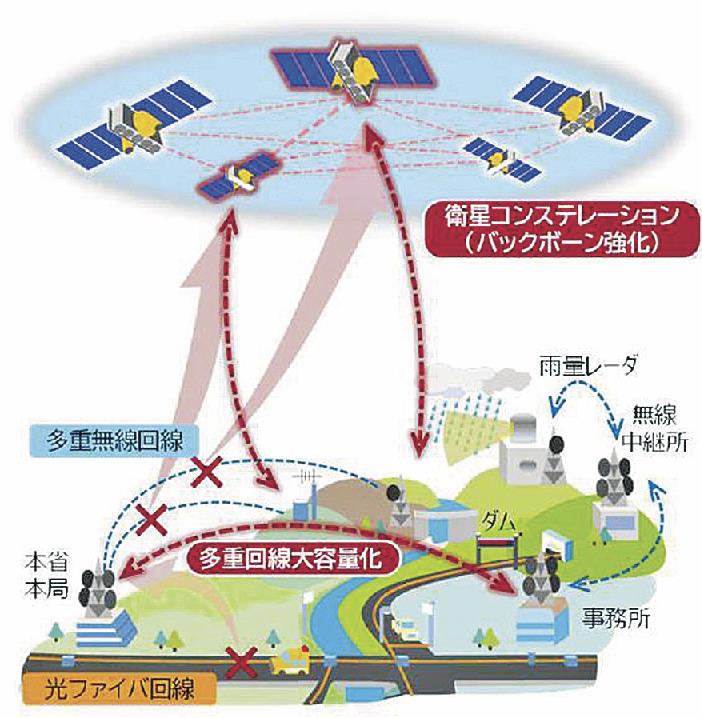Ministry of Land, Infrastructure, Transport and Tourism / Formulation of a new telecommunications technology vision in the infrastructure field, focusing on sensors, AI, etc.

Image of next-generation integrated network (from Ministry of Land, Infrastructure, Transport and Tourism materials)
The Ministry of Land, Infrastructure, Transport and Tourism has formulated a "Telecommunications Technology Vision" for the five years from 2023. Presents the direction of technology development and technology introduction in the field of telecommunications that will lead to the advancement of infrastructure management and disaster prevention and mitigation. Three rapidly developing themes of "information communication," "sensors," and "AI" were cited as priority themes to be tackled. In addition to strengthening the existing communication infrastructure, building a "next-generation integrated network" that secures detour routes in the event of a disaster in cooperation with satellite constellations (satellite networks in which many small satellites work together to collect information).
The Ministry of Land, Infrastructure, Transport and Tourism has laid optical fibers for managing rivers and roads, and owns its own communication network. In particular, in the event of a disaster, video confirmation and teleconferencing will become the norm, requiring improved reliability of communication lines and support for large-capacity communication.
In cooperation with external communications such as satellite constellations, new communication route control technology has also been introduced. Aiming for advanced operation of a communication network that can flexibly and automatically bypass traffic. We will also promote the construction of a "common platform" with a view to interconnection with local governments and use by residents in the event of a disaster.
As one of the technical elements necessary for the realization of river basin flood control, this is a technical verification of planar management of the target area using high-performance sensors. It is possible to collect disaster information over a wide area including private land as well as the management area of directly controlled facilities. We will realize highly mobile disaster prevention communication by securing temporary lines at disaster sites using local 5G.
Technology that uses AI to detect dangerous events will expand the scope of its use beyond vehicle detection to include landslides, flooding/overtopping, and unauthorized intrusion. The aim is to improve the accuracy of AI detection technology by combining images and sensors. We will also work on remote control and automation of infrastructure management using AI technology.
In addition to this, we will also strengthen technological development aimed at DX and GX (Green Transformation). We will build a communication environment in which BIM/CIM data can be used on a daily basis, and develop energy-saving telecommunications facilities.






